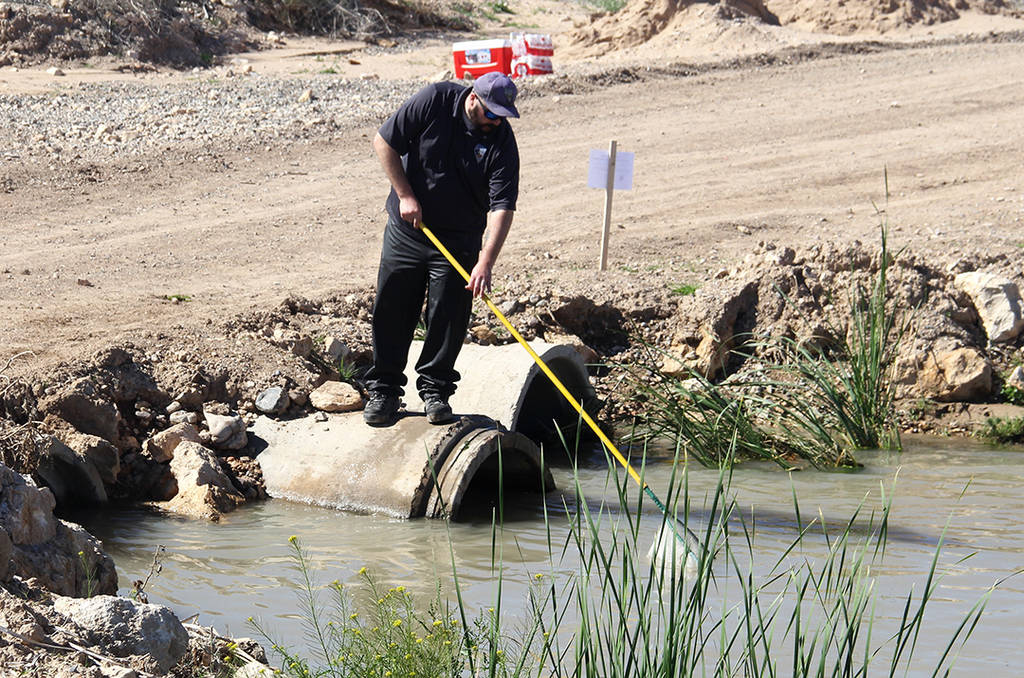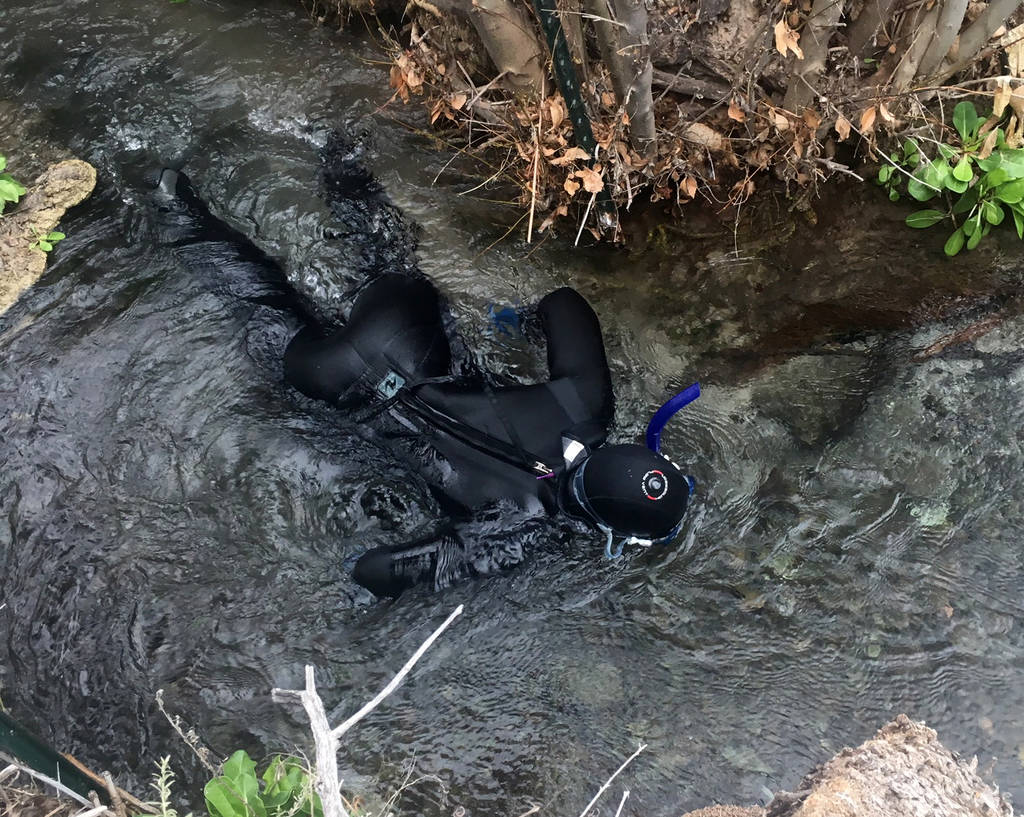Nevada says endangered fish habitat cleansed of invasive predator
Wildlife officials are close to declaring victory over a non-native fish that has been chowing down on the endangered inhabitants of a Southern Nevada river.
The Nevada Department of Wildlife announced the completion of its final chemical treatment on the Muddy River aimed at killing off invasive blue tilapia, which are blamed for pushing the native Moapa dace to the brink of extinction.
Officials have spent the past five years trapping tilapia and releasing fish poison along a 20-mile stretch of the river to eradicate the invaders. The last toxin treatment was completed on March 22 on an almost 10-mile river section between Moapa and Logandale.
“Removal of tilapia is an essential step toward removing threats to Moapa dace and other Muddy River native fishes,” said Amos Rehm, the Muddy River fisheries biologist for the department. “Mechanical removal and other physical methods are not adequate to control blue tilapia, so we used rotenone.”
Rotenone is a naturally occurring substance derived from the roots of a South American plant that in high enough concentrations is lethal to gill breathing organisms like fish or early-stage amphibians but harmless to nonaquatic wildlife.
Before treating each section of the spring-fed river, biologists spent several months collecting as many native fish as possible and moving them to previously treated areas.
The rotenone was neutralized at the downstream end of the treatment area with a common water purifying chemical that temporarily turned the water purple.
Blue tilapia is a predatory fish species that was first reported in the Muddy River in 1991 and quickly spread through the watershed.
The effort to get rid of them seems to have worked.
“Follow-up surveys have shown that native fish populations in the previously treated portions of the river are doing well and increasing in number,” said Brandon Senger, supervising fisheries biologist for the department, in a statement.
Since the eradication effort, no tilapia have been spotted in the upper reaches of the river, where the dace are found.
The Moapa dace population stands at about 1,500, according to the latest count conducted in February.
The recovery plan for the finger-length fish with a black spot on its tail calls for the species to remain under federal protection until at least 75 percent of its historic habitat is protected and its population in the wild reaches 6,000.
The dace was added to the endangered species list in 1967. What’s left of its habitat can be found 60 miles northeast of Las Vegas at the Moapa Valley National Wildlife Refuge, some adjacent private land and on a 1,218-acre tract the Southern Nevada Water Authority bought for $69 million in 2007 and maintains as the Warm Springs Natural Area.
The department and the U.S. Fish and Wildlife Service also keep a reserve population in carefully maintained tanks at the state fish hatchery near Lake Mead.
Contact Henry Brean at hbrean@reviewjournal.com or 702-383-0350. Follow @RefriedBrean on Twitter.






















